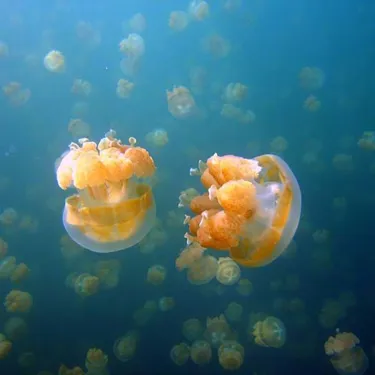
The name Jellyfish is rather misleading as these animals are not classed as fish but as Cnidarians; along with corals and sea anemones.
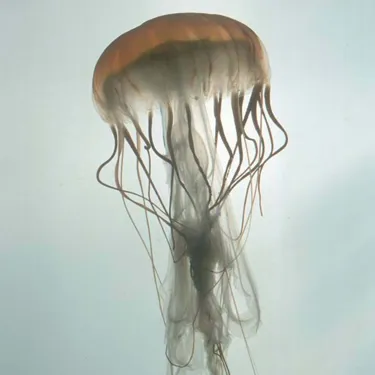
Their main body, called the bell, pulsates to drive them through the water trailing stinging tentacles behind them for catching prey.
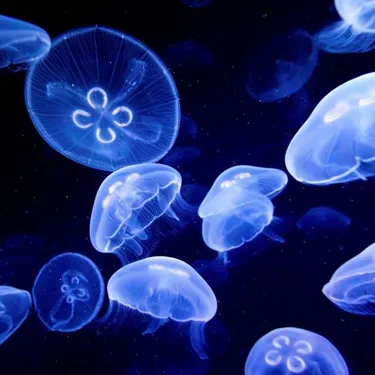
They range greatly in size from around one millimetre in bell diameter to nearly 2 meters!
Lion's Mane
The largest of all jellyfish and one of the longest animals in the ocean is the Lion's Mane jellyfish! Its tentacles can extend to over 36 meters (that’s longer than a Blue whale!) and its bell to 2m in diameter; though of course most do not reach this size. Found in the cold waters of the Arctic, northern Atlantic and northern Pacific Oceans; Lion’s Mane jellyfish are commonly spotted around the UK coastline. They are particularly beautiful jellyfish ranging in colour from blood red to vibrant orange or dark purple. Their mane-like trail of tentacles earned them their name.
Photo credit: Kip Evans

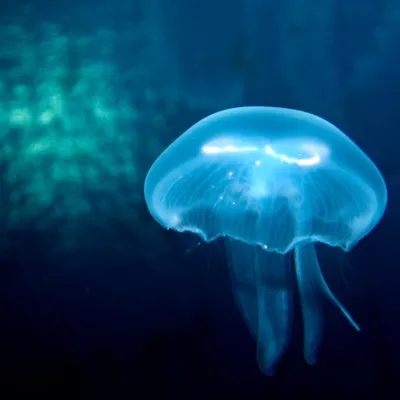
Jellyfish have no heart, blood or respiratory organs.
Their cells absorb oxygen from the water around them and release carbon dioxide. They also have no brain or central nervous system! What they do have are nerve nets consisting of sensory neurons (which produce signals in response to various stimulus such as the touch of a prey fish) and motor neurons (which instruct muscles to contract). So they get by on reflex reactions to their environment rather than conscious thought and decision making.
Some Jellyfish has oceli. These are light-sensitive organs that detect light and are used to tell the difference between up and down; between the bright ocean surface and the dark ocean depths. They are often referred to as eyes but they are nowhere near as complex and do not form images.
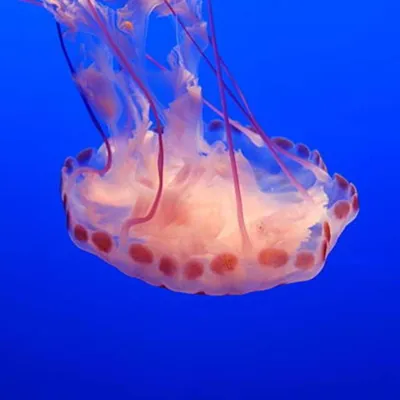
Jellyfish are carnivorous predators.
They feed on prey such as plankton, crustaceans, fish eggs, small and juvenile fish… even other jellyfish! To catch their prey they use tentacles armed with special stinging cells called nematocysts. When a jellyfish’s tentacle comes into contact with its prey, it triggers millions of nematocysts to fire out little harpoon like structures which pierce the skin and inject venom.
Some jellyfish stings can harm humans; there are a few jellyfish, such as the Box jellyfish and Irukandji jellyfish which can kill a person. However the majority of jellyfish stings are either too weak to pierce our skin or simply have venom that does not cause an adverse reaction in humans. In fact of hundreds species of jellyfish, only approximately 70 are able to sting us.
Box Jellyfish
Box jellyfish are notorious for having an extremely painful sting that can be fatal to humans. They are, however only a small and rather innocuous looking jellyfish; they reach a maximum of 20cm along each side of their box shaped bell, with tentacles up to 3m in length and are clear in colour. Yet even a Box jellyfish only a centimetre in diameter can kill proving that looks can be deceiving! Box jellyfish also have more advanced vision than other jellyfish; with 24 eyes! Two of their eyes can see in colour and it is believed that they have a 360 degree view around them.
(Photo credit: J.Bielecki, A.K.Zaharoff, N.Y.Leung, A.Garm, T.H.Oakley)

Jellyfish Lifecycle
Jellyfish go through many different stages of development during their lifecycle. Depending on the jellyfish species eggs are either fertilised within the female or through spawning (the females and males releasing eggs and sperm into the water at the same time).
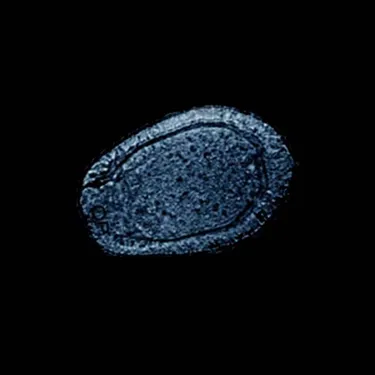
1. Planula
Fertilised eggs develop into larval planulae which swim through the ocean currents as plankton; little cilia (hair like cells) on their surface help them to move through the water.
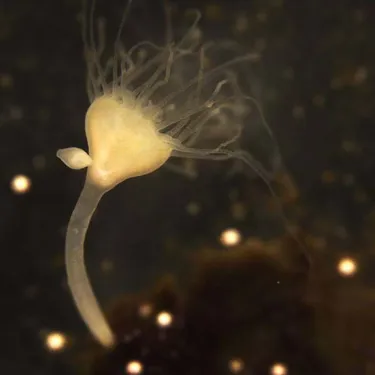
2. Polyp
Eventually a planula settles onto a firm surface it develops into a polyp. A polyp is a small stalk with a mouth, circled by tentacles; not dissimilar to a sea anemone. Polyps are not free moving like planula; they, like sea anemones, are anchored onto substrate such as the seabed, rocks, the hulls of boats or even the shell of a sea turtle. Jellyfish can remain in the polyp stage for a long time, feeding continuously using their tentacles to catch food drifting past and waiting for the right conditions for the next stage of development. This is the longest stage of development for a jellyfish; they will remain as polyps for numbers of years.
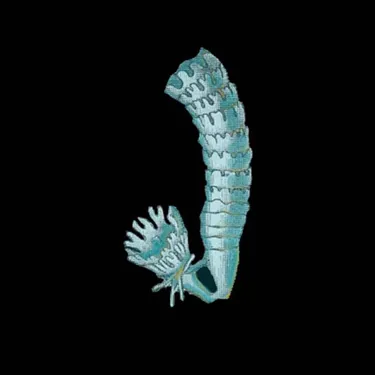
3. Budding
Polyps can reproduce asexually in two different ways.
1. Some polyps grow branches which detach to become more polyps, eventually forming large colonies across the ocean floor; this is known as strobilation. When the time is right each of these polyps will develop into an ephyra.
2. Other species produce more polyps when they bud; growing upwards instead of outwards. The top section of a polyp begins to separate into buds piled on top of each other; like a stack of plates. Each of these buds develops into an ephyra.
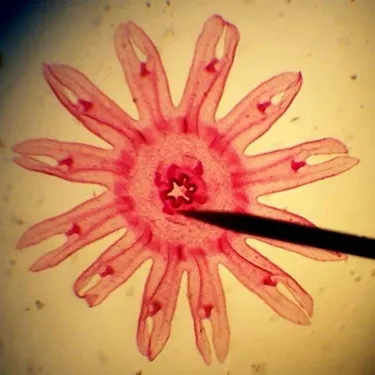
4. Ephyra
The ephyra is a free-swimming precursor of the final adult stage. It looks a little like a flower or fried egg, pulsing around in the currents.
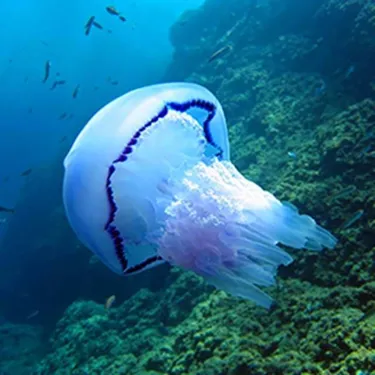
5. Medusa
The ephyra develops into the final stage known as the medusa; the form that we recognise as a jellyfish.
Immortal Jellyfish
This small species of jellyfish is found in the Mediterranean Sea and in the waters of Japan and is the only known
case of an animal which is able to completely revert back to its sexually immature stage after having reached sexual
maturity. It starts life as a free-swimming planula and goes through the same process as other jellyfish of forming polyp colonies which produce ephyra through budding. However once in its jellyfish form, if it is exposed to environmental stress, is injured, sick or just getting old, this species of jellyfish can revert back to its polyp form, eventually budding once again to produce genetically identical jellyfish. In theory this process could go on indefinitely which is why this jellyfish has been named immortal. However over time even an Immortal jellyfish is likely to succumb to predation or disease ending the cycle.

Blooms
Jellyfish are known to congregate in huge swarms known as ‘blooms’. These blooms have been increasing over recent years and many believe this is due to human impact due to overfishing. It could be that jellyfish are filling ecological niches left open by species being overfished.
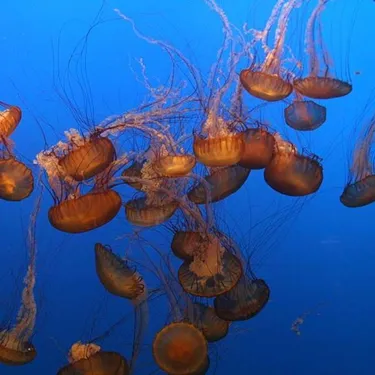
Blooms can consist of hundreds to thousands of individuals.
(Photo credit: Brocken Inaglory)
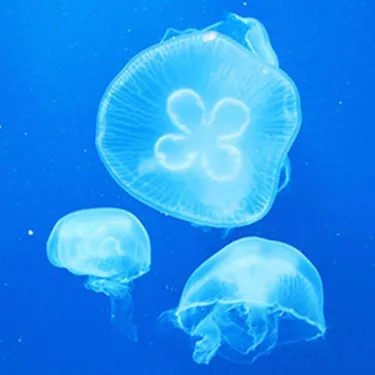
These blooms have been increasing over recent years and many believe this is due to human impact due to overfishing...
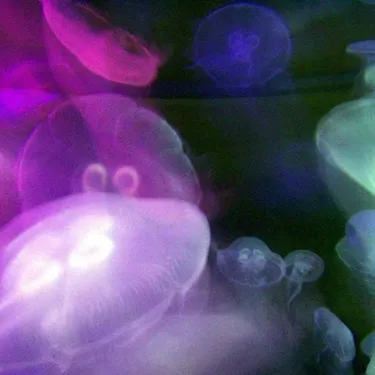
...It could be that jellyfish are filling ecological niches left open by species being overfished.
Barrel Jellyfish
Barrel jellyfish can reach up to 90cm in diameter making them the largest jellyfish species in British waters. High numbers of Barrel jellyfish near UK beaches made the news last summer, however contrary to some sensationalist media reports, these gentle giants are harmless to humans.

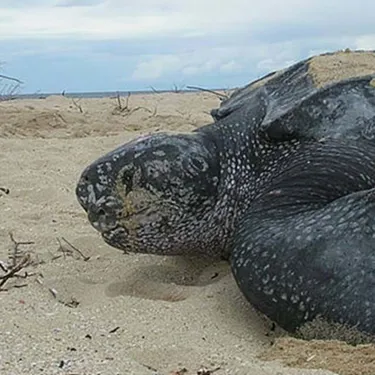
Every summer Leatherback sea turtles visit UK waters to gorge themselves on jellyfish blooms. (Photo credit: U.S. Fish and Wildlife Service Southeast Region)

Unfortunately sea turtles sometimes encounter plastic bags floating in the ocean and mistake them for jellyfish; often choking on them and dying. You can help by reducing your use of plastic bags.
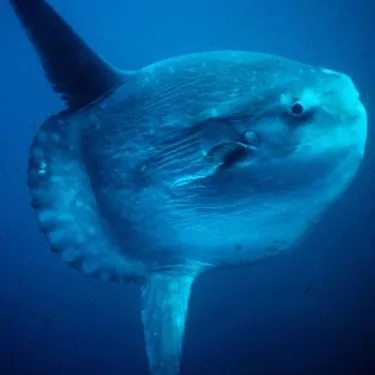
The enormous Ocean sunfish or Mola Mola, is the largest bony fish in the world. It feeds on jellyfish but has to eat them in huge volume to maintain their bulk as this diet is nutritionally poor.